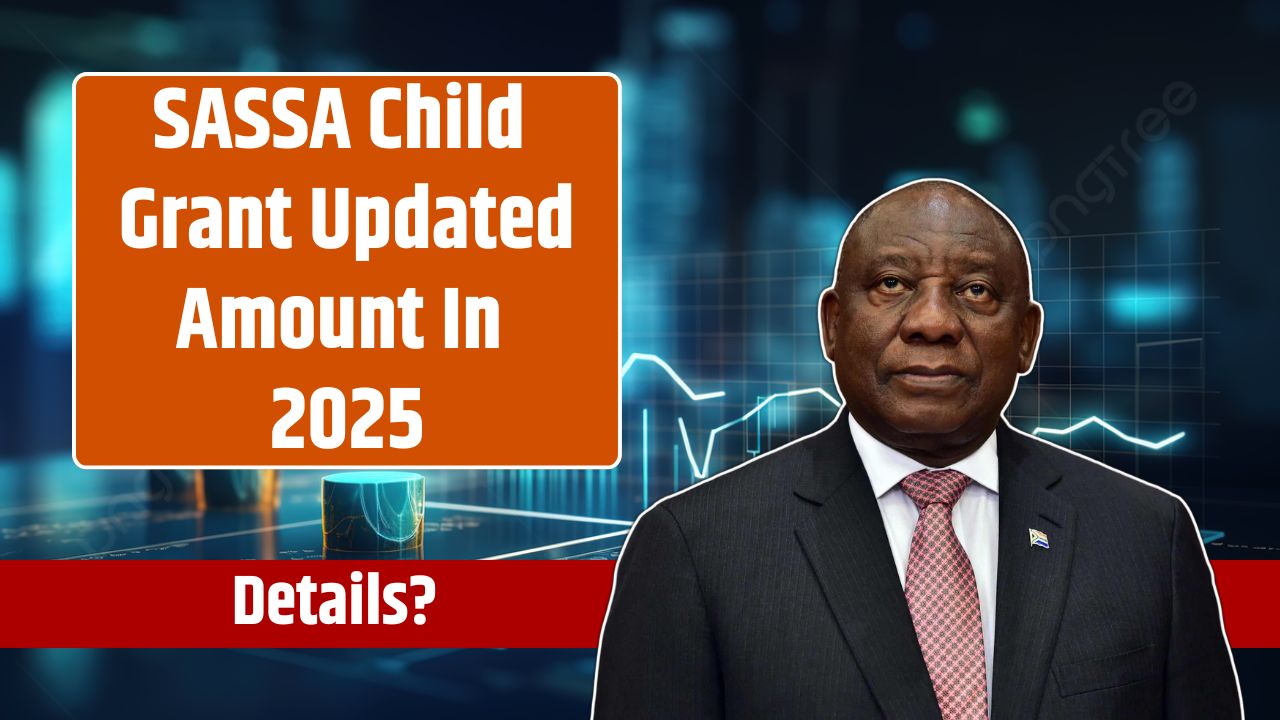The SASSA Child Support Grant continues to play a vital role in supporting low-income families in South Africa.
Following the 2024 increase, the grant amount for 2025 has been further adjusted to provide additional financial relief, reflecting the government’s commitment to addressing poverty and economic inequality.
Here’s a comprehensive breakdown of the 2025 Child Grant increase, its impact, and how families can maximize its benefits.
Overview of the SASSA Child Grant
The Child Support Grant was established to assist families with children under 18 years of age who face financial challenges.
Over time, the program has evolved to address rising living costs and support families in meeting their children’s basic needs, such as food, education, and healthcare.
2025 Grant Increase
The 2025 adjustment builds on the 2024 increase, ensuring the grant remains effective in light of inflation and economic pressures.
Updated Grant Amount
- 2024 Amount: R500 per child monthly.
- 2025 Amount: R530 per child monthly, reflecting a 6% increase in line with inflation and government budget allocations.
This increase is part of a broader strategy to enhance social support for families in need, ensuring children receive adequate care and opportunities for growth.
Economic Impact
For Families
The increase provides low-income households with additional financial resources to cover essential expenses, including:
- Food: Improved access to nutritious meals for children.
- Schooling: Assistance with uniforms, supplies, and school fees.
- Healthcare: Support for medical expenses, ensuring children’s well-being.
For Communities
The ripple effect of grant spending boosts local economies, particularly in underserved areas where recipients use their funds to support local businesses.
Social Benefits
The additional grant amount is expected to have significant social implications:
1. Improved Child Welfare
- Families can allocate more resources to ensure children’s basic needs are met.
- Better nutrition and healthcare improve children’s physical and mental development.
2. Enhanced Education
- More families can afford school supplies, transportation, and extracurricular activities.
- Increased educational opportunities contribute to breaking the cycle of poverty.
3. Long-Term Outcomes
- The grant supports children’s overall well-being, paving the way for a healthier, more educated, and economically stable generation.
How to Maximize the Grant
Families can make the most of the grant increase by adopting smart financial strategies:
1. Create a Budget
- Prioritize essential expenses such as food, school fees, and medical care.
- Allocate a portion of the grant for future needs or emergencies.
2. Track Spending
- Regularly monitor where the money is being used to identify areas for improvement.
3. Seek Additional Support
- Explore complementary resources like food programs or educational subsidies.
Challenges and Government Initiatives
While the grant increase is a positive development, challenges remain:
Administrative Hurdles
- Ensuring timely and accurate distribution of funds to all beneficiaries.
Budget Constraints
- Balancing the grant increase with other social welfare priorities.
Fraud Prevention
- Strengthening monitoring systems to ensure funds reach intended recipients.
To address these challenges, the government continues to work with NGOs and international organizations to improve program efficiency and impact.
Public and Expert Reactions
Beneficiaries’ Feedback
- Many families welcome the increase, citing its importance in covering rising costs.
- Some beneficiaries, however, feel the increase is insufficient given the broader economic challenges.
Expert Analysis
- Economists: Highlight the grant’s role in reducing child poverty and boosting local economies.
- Social Workers: Emphasize its importance in improving children’s education and health outcomes.
- Academics: Call for continuous evaluation to ensure the grant remains impactful and sustainable.
Future Outlook
The 2025 increase demonstrates the government’s commitment to enhancing social welfare, but additional adjustments may be needed as economic conditions evolve.
Potential Developments
- Further increases in grant amounts as inflation rises.
- Expanded eligibility criteria to support more families.
- Improved administrative systems to ensure faster and more reliable payments.
The 2025 SASSA Child Grant increase to R530 per child marks a significant step in supporting low-income families.
By addressing immediate financial needs and investing in children’s futures, the grant plays a critical role in reducing poverty and fostering long-term social development.
Families are encouraged to budget wisely and explore additional resources to maximize the benefits of this vital financial aid.
















